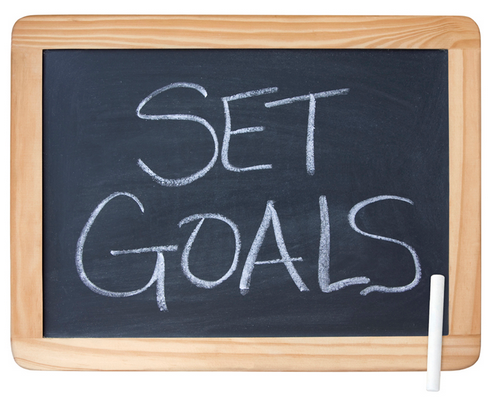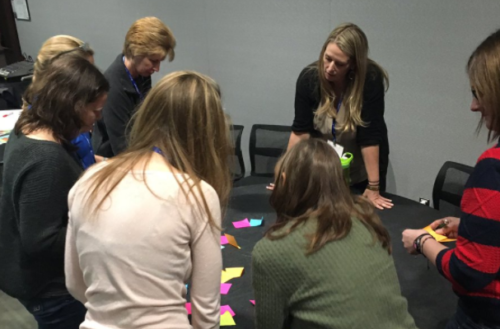National Health Education Standard 4: Students will demonstrate the ability to use goal-setting skills to enhance health.
One of the best ways to kick off the school year is with a unit on goal setting, since everyone returns fresh from summer vacation and ready for a strong new start. I particularly enjoy this unit because it’s one I get to participate in, along with the kids. In order to teach them how to maneuver the goal-setting process, I first have them help me come up with a goal, and then have them set one of their own.
While kids have a vague idea of how to set goals, many of them focus on extrinsic rewards, like pleasing their parents, so I tell them to use this project to work on accomplishing something that is personal to them. It can involve any aspect of their health – physical, mental, emotional, or social.
Here are some of the key points we go over before they get started:
1. Set a SMART goal.
Many different versions of the acronym SMART have been used in relation to goal setting, but the following is what I have found to work best with middle school students. For a goal to be effective, it must be: Specific, Measurable, Adjustable, Realistic, and Timely.
To explain this concept, I present the kids with a vague goal of mine, such as, “I want to make more friends at work.” By examining the goal through the lens of the SMART descriptors, the kids were able to change it to, “I will eat lunch in the cafeteria with the other teachers at least four days a week.” This new goal hits all of the key points, and is much healthier than eating at my desk.
2. Find someone who can help.
Goals are difficult to accomplish without support, so finding help is an important part of the process. Keep in mind that help can come in many different forms: a parent, coach, teacher, friend, or even a helpful group of seventh graders who check the cafeteria every day to make sure that you’re sticking to your plan.
3. Set goals that are based on action, not circumstance.
For example, “I will not get angry at my little brother” isn’t really a measurable goal, and it likely depends on your brother doing something to provoke an emotional reaction. If you want to get along better with your brother, put a positive spin on it, and change the goal to, “I will play with my little brother for 30 minutes after school everyday.”
4. Write it down.
This one’s backed by science. Recent studies have found that when student write out their goals (and thus, become more likely to achieve them), they’re helping to erase gender and ethnic minority gaps in education. As my mother used to say, “You’ve got to see it to achieve it!” I’m sure I found that highly annoying as a teenager, but now that I’m all grown up, I totally get it. Thanks, mom!
5. Model good goal-setting behavior.
It’s fun for the kids to see me sitting down at the cafeteria socializing with my coworkers. They’ve witnessed how a goal can become a habit, and they feel like they’ve helped me make new friends. Share your goals with your students, whether they’re physical, like trying to master a yoga handstand, social, like cutting down on screen time in your family, or professional, like working on an advanced degree. The kids will see that goal setting is a skill they’ll need for life, plus they can help you celebrate your success.
(Just be sure to avoid any goals that are focused on appearance, as that can send the wrong message… besides, the kids already get enough of that from the media!)
For a fun way to get the unit started, here are some clips of inspirational goal setters that will motivate any class.




